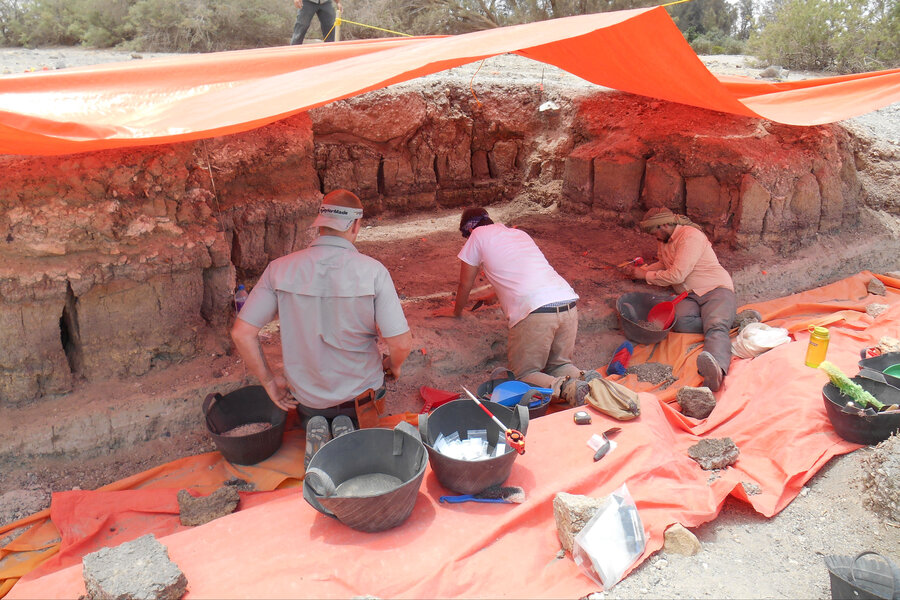How did ancient butchers work? 250,000-year-old tools offer insight
Loading...
Just how long ago did our ancestors set foot on the path to "Top Chef"?
The answer to that question comes from the arid Jordanian desert, according to a team of archaeologists. In an ancient watering hole called the Azraq Oasis, archaeologists found evidence that humans were using tools to kill, butcher, and prepare a variety of prey animals as much as 250,000 years ago.
"Researchers have known for decades about carnivorous behaviours by tool-making hominins dating back 2.5 million years, but now, for the first time, we have direct evidence of exploitation by our Stone Age ancestors of specific animals for subsistence," said University of Victoria archaeologist April Nowell in a press release.
The Azraq Oasis is more dusty today than its name implies, as the springs that once fed the area were diverted to a local human settlement in the late 20th century. But 250,000 years ago, it was a watering hole that attracted a rich gathering of species, including human hunters, who used the hole to ambush prey animals who were distracted by the water.
Archaeologists found 10,000 tools at the watering hole while sifting through one of the upper strata of geological layers at the site, which they determined to be about 250,000 years old. Among those tools were projectile points and axe heads, a versatile tool that archaeologists call the “Swiss Army knife” of the Paleolithic period.
At most archaeological sites, Dr. Nowell told The Washington Post, researchers can make logical assumptions about what was hunted, and by whom, by bone remnants and tools that were left behind. But at this site, she decided to go a step further when a colleague recommended that she send the Azraq tools in for special analysis.
Nowell picked six artifacts for the expensive test, called a immunoelectrophoresis test, which is normally done on much younger objects to test for any remaining residue from the time period in which they were originally used.
Sure enough, the results came back positive for at least one of the objects, which carried residue from an unfortunate ancient horse. After that test worked, researchers selected 44 more objects for testing, and found that our Jordanian ancestors hunted rhinos, ducks, wild cattle, and camels, in addition to wild horses.
"The implication of all of this is these early hominins were engaging in a wide variety of techniques in order to exploit these kind of animals," Nowell told the Vancouver Metro. "It might seem obvious to say, but the way you take down a rhino is different than the way you take down a duck. A rhinoceros requires a certain amount of coordination to take down, and even if you're scavenging you have to know how to drive off predators, which still requires coordination."
No tool tested positive for two different species, which led researchers to conclude that they may have been used almost like disposable knives – used once and then tossed away.
More surprising was the implication that ancient pre-humans were more complex than previously imagined. Our species, Homo sapiens, did not develop until about 50,000 years after these tools were used, meaning that the pre-humans who hunted at the watering hole belonged to an unidentified hominin species.
Specialization is easier, the scientists explained, so was the norm for most pre-human species. To hunt such a large number of different species at the oasis, these hominins would have had to accomplish a wide range of tasks requiring a great deal of sophistication.
"It's such a direct window onto past behavior," Nowell told The Washington Post. "It gives sort of a richer picture and a more complex picture of the lives of people 250,000 years ago."








